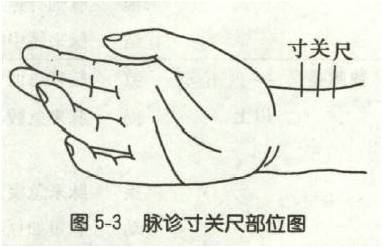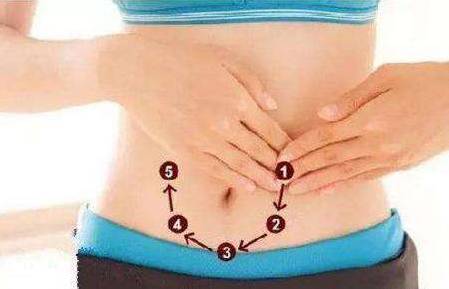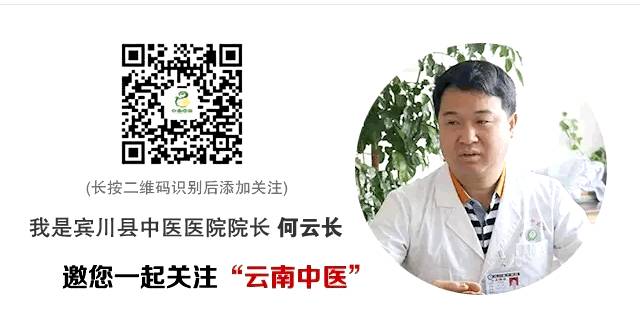This public account is hosted by the Yunnan Provincial Administration of Traditional Chinese Medicine. If you have not followed yet, please click the blue “Yunnan TCM” above to follow.

▶This article is the content of the “Learn TCM with Me” column, issue 597. Thank you for your support and sharing! Learn a little every day, and live a healthy life!
Editor’s Guide
The four diagnostic key points for gynecological diseases focus on the examination methods related to menstruation, leukorrhea, pregnancy, and childbirth while understanding the overall symptoms. In clinical practice, all four diagnostic methods must be used in conjunction, without neglecting any. In the previous article, we learned how to use observation, listening, and inquiry to diagnose gynecological diseases. Today, let’s continue learning how to use pulse diagnosis to treat gynecological diseases!

Pulse diagnosis includes both pulse taking and abdominal and limb examination.
1. Pulse Diagnosis
The differentiation of cold, heat, deficiency, and excess in gynecological diseases is similar to that in other departments. Here, we will elaborate on the common pulse patterns related to menstruation, leukorrhea, pregnancy, and childbirth.
(1) Menstrual Pulse
Normal menstrual pulse: When menstruation is approaching or during the menstrual period, the pulse is often slippery and smooth.
Menstrual disease pulse: The pulse patterns for menstrual diseases mainly include deficiency, excess, cold, and heat. A slow and weak pulse often indicates Qi deficiency; a thin and weak pulse usually indicates blood deficiency; a deep and thin pulse often suggests kidney Qi deficiency; a thin and rapid pulse may indicate kidney Yin deficiency or deficiency heat; a deep and weak pulse or a deep and thin pulse often indicates kidney Yang deficiency. A wiry pulse usually indicates Qi stagnation or liver depression; a choppy or slippery pulse often indicates blood stasis; a slippery and strong pulse usually indicates phlegm-dampness with blood stasis. A deep and tight pulse often indicates blood cold; a deep, slow, and weak pulse usually indicates deficiency cold; a deep and tight or soft pulse often indicates cold-damp stagnation. A slippery and rapid pulse or a surging pulse often indicates blood heat; a thin and rapid pulse usually indicates deficiency heat; a wiry and rapid pulse with strength often indicates liver depression transforming into heat.
(2) Leukorrhea Pulse
Excessive leukorrhea is inherently pathological, so there are only pathological pulses for leukorrhea. A slow and slippery pulse often indicates spleen deficiency with dampness; a deep and weak pulse often indicates kidney Qi deficiency; a slippery and rapid or wiry pulse often indicates damp-heat; a deep and tight or soft pulse often indicates cold-damp.

(3) Pregnancy Pulse
Normal pregnancy pulse: After three months of pregnancy, the six pulses are often harmonious and slippery, and the pulse does not stop upon palpation, especially the cun pulse.
Pregnancy disease pulse: If the pregnancy pulse is deep, thin, and choppy, or if both cun pulses are very weak, it often indicates kidney Qi deficiency and insufficient Chong and Ren channels, which can lead to fetal restlessness or miscarriage. If the pulse is wiry and rapid in late pregnancy, it often indicates insufficient liver Yin and excessive liver Yang, which can lead to pregnancy dizziness or pregnancy seizures.
(4) Labor Pulse
Also known as the departure pulse. The Pulse Classic states, “When pregnant, the departure pulse is floating.” The Complete Book of Women’s Good Remedies states, “A deep, thin, and slippery pulse is also called the same.” The Principles of Diagnosis and Treatment states, “If the cun pulse turns urgent, like cutting a rope and turning a bead, it indicates labor.” The Xue’s Medical Cases states, “If you pinch the middle finger of the laboring mother, the middle joint or the base joint jumps, it indicates labor.” Many later scholars have similar or close opinions: Generally speaking, the departure pulse is characterized by the six pulses being floating and large, and during labor, the cun pulse turns urgent, like cutting a rope and turning a bead, while the middle finger’s base joint, middle joint, or even the side of the fingertip pulsates.
(5) Postpartum Pulse
Normal postpartum pulse: After childbirth, the Qi and blood of Chong and Ren are often deficient, so the pulse is often weak and even.
Postpartum disease pulse: If the pulse is floating, slippery, and rapid, it often indicates that Yin blood has not yet recovered, with floating Yang rising, or an external pathogenic factor. A deep, thin, choppy, and weak pulse often indicates blood loss and deficiency.

2. Abdominal Examination
The abdominal examination for gynecological diseases mainly involves examining the abdomen and limbs.
For conditions such as dysmenorrhea, amenorrhea, and abdominal masses, the lower abdomen should be palpated to differentiate between deficiency and excess, and to clarify the presence of masses and distinguish between pregnancy-related diseases. If a woman experiences abdominal pain during menstruation and resists palpation, it often indicates excess; if the pain is hidden and she prefers palpation, it often indicates deficiency; if the limbs are cold and the lower abdomen is painful, with a preference for warmth and palpation, it often indicates deficiency cold. If a mass is found in the lower abdomen, it may indicate a cancerous mass; if the mass is hard and immovable with significant pain upon palpation, it indicates blood stasis; if the mass is soft, movable, and disperses upon palpation, it indicates Qi stagnation.
If the limbs are cold, it often indicates Yang deficiency or Qi deficiency; if the palms and soles are hot, it indicates Yin deficiency with internal heat. For swelling during pregnancy, the lower limbs are often examined. If the shin is significantly indented upon palpation, or if there are no finger marks, it often indicates water retention; if the indentation disappears quickly, it indicates Qi swelling. Sometimes, further gynecological examinations and auxiliary tests are necessary for a clearer diagnosis. For all pregnant women, abdominal examination should be performed before delivery.
In summary, in clinical practice, it is advisable to use all four diagnostic methods in conjunction, grasp the main symptoms, and analyze the location of the disease to make an accurate diagnosis.
Related Reading:
How to Use Observation, Listening, and Inquiry to Diagnose Gynecological Diseases?
What are the Three Major Categories of Pathogenic Mechanisms Leading to Women’s Diseases?

Doctor Recommendation
Jiang Qing, Associate Chief Physician, working at Dali Prefecture Binchuan County TCM Hospital. Specializes in the diagnosis and treatment of gynecological diseases.
Compiled by/Yang Xiaoyan Edited by/Chen Sisi Typeset by/Li Yanping


Click “Read the Original” to enter “Qihuang Academy” and start your remote TCM learning journey!

